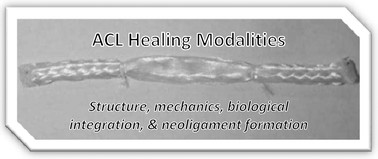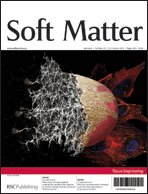Novel matrix based anterior cruciate ligament (ACL) regeneration†
Abstract
Among the five ligaments in the knee the anterior cruciate ligament (ACL) is among the most important for stability and also the most commonly injured. Due to a lack of vascularization, the ACL has poor healing potential, therefore moderate to severe damage warrants medical intervention. Ligaments are complex, highly organized tissues; they are longitudinally arranged with a great deal of order that begins at the molecular level and carries through to the tissue level. The components of the ligament and their location and orientation heavily influence the tissue's mechanical behavior.

- This article is part of the themed collection: Tissue Engineering

 Please wait while we load your content...
Please wait while we load your content...